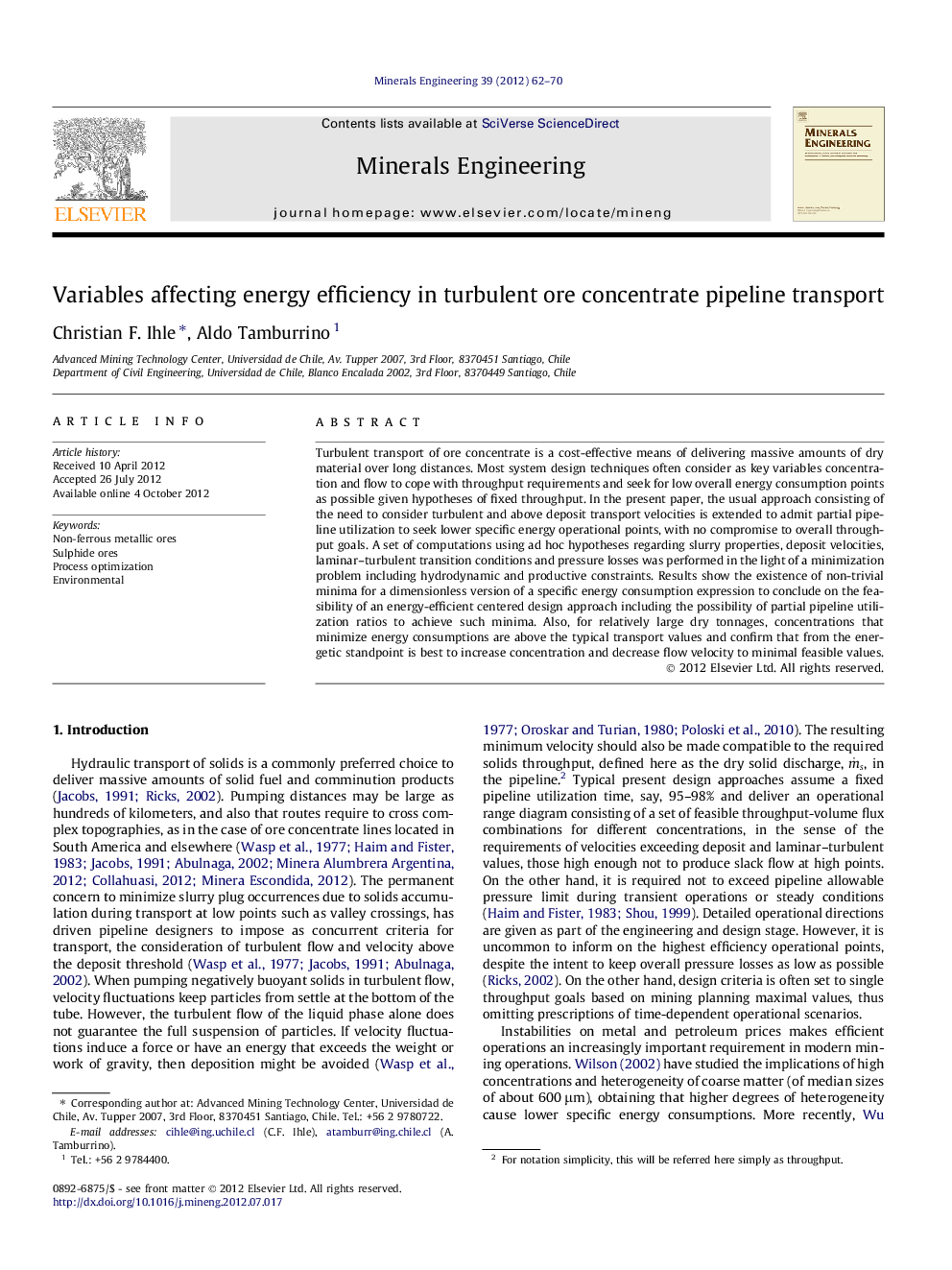| Article ID | Journal | Published Year | Pages | File Type |
|---|---|---|---|---|
| 233583 | Minerals Engineering | 2012 | 9 Pages |
Turbulent transport of ore concentrate is a cost-effective means of delivering massive amounts of dry material over long distances. Most system design techniques often consider as key variables concentration and flow to cope with throughput requirements and seek for low overall energy consumption points as possible given hypotheses of fixed throughput. In the present paper, the usual approach consisting of the need to consider turbulent and above deposit transport velocities is extended to admit partial pipeline utilization to seek lower specific energy operational points, with no compromise to overall throughput goals. A set of computations using ad hoc hypotheses regarding slurry properties, deposit velocities, laminar–turbulent transition conditions and pressure losses was performed in the light of a minimization problem including hydrodynamic and productive constraints. Results show the existence of non-trivial minima for a dimensionless version of a specific energy consumption expression to conclude on the feasibility of an energy-efficient centered design approach including the possibility of partial pipeline utilization ratios to achieve such minima. Also, for relatively large dry tonnages, concentrations that minimize energy consumptions are above the typical transport values and confirm that from the energetic standpoint is best to increase concentration and decrease flow velocity to minimal feasible values.
► Turbulent transport of ore concentrate is a cost-effective technique. ► Typically operations consider fixed pipeline utilization. ► Variable pipeline utilization at fixed throughput lowers specific energy consumption. ► Higher concentrations and lower flow velocities is a desirable configuration.
